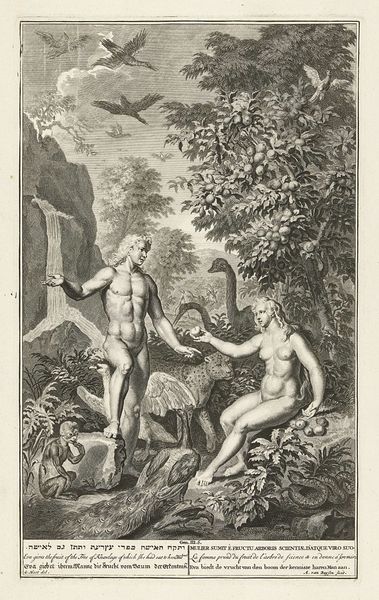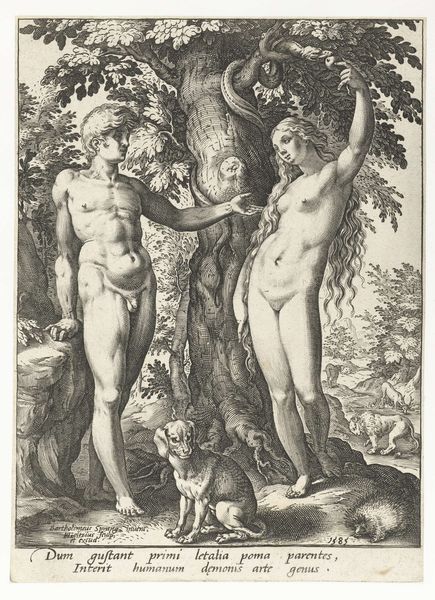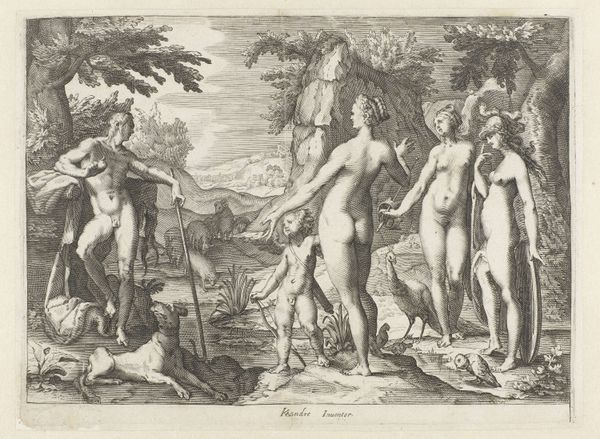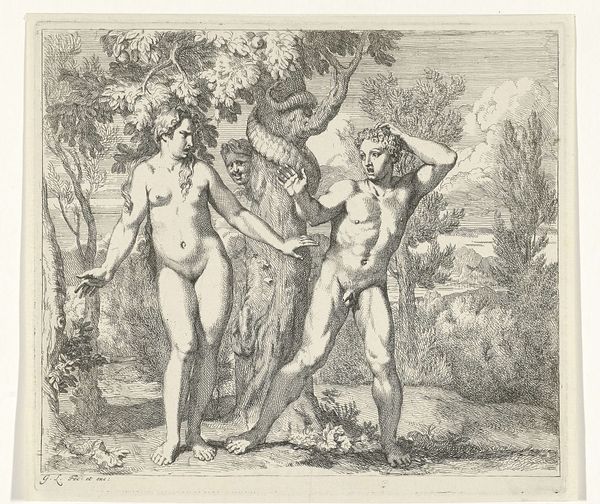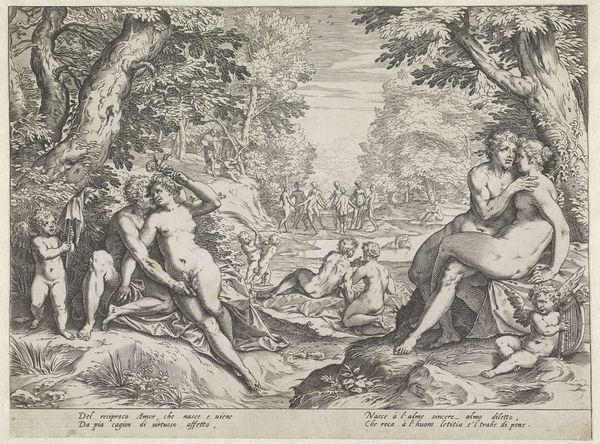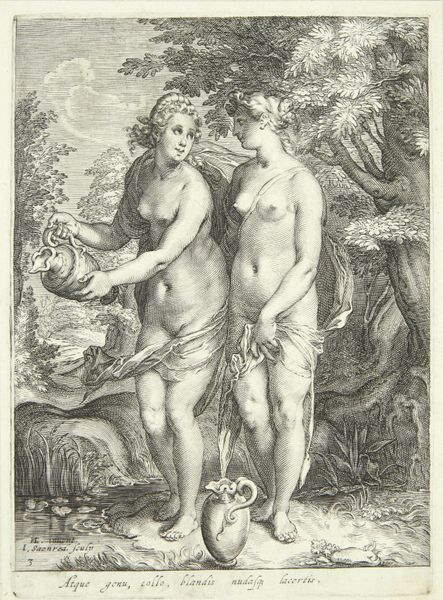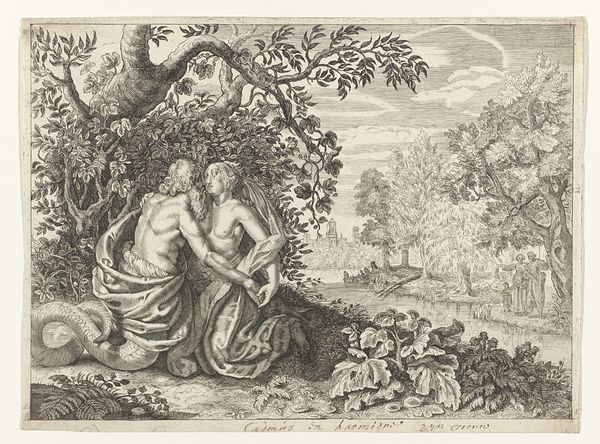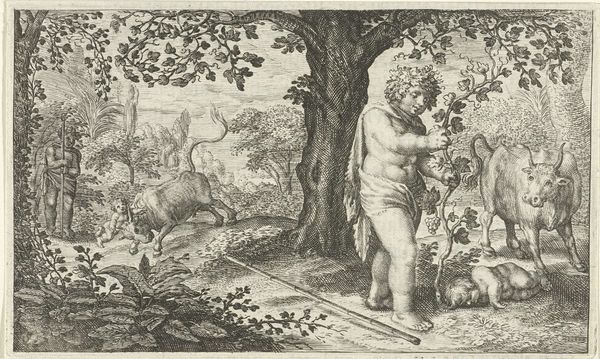
engraving
#
allegory
#
pen drawing
#
landscape
#
figuration
#
11_renaissance
#
history-painting
#
northern-renaissance
#
academic-art
#
nude
#
engraving
Dimensions: height 310 mm, width 388 mm
Copyright: Rijks Museum: Open Domain
Jacob Matham made this engraving, *Adam and Eve in Paradise,* in the Netherlands, sometime around 1600. The image stages the moment of temptation in the Garden of Eden, with Eve offering Adam the forbidden fruit. Matham was one of the foremost printmakers of the era, whose engravings were collected and disseminated widely. What did this image mean to viewers at the time? The story of Adam and Eve would have been familiar to a broad public, but the print is not merely illustrating scripture. Rather, the image is laden with contemporary cultural meaning. Note the prominent presence of the snake coiled around the tree, an explicit symbol of sin and deceit. Also note the figures of Adam and Eve who are idealized according to the aesthetic norms of Northern Mannerism. Looking at an image like this, it is important to consider the relationship between sacred stories, artistic conventions, and the social role of images in 17th century Dutch society. Sources such as religious pamphlets, art treatises, and inventories of household possessions can help us to understand the place of images in the cultural imagination of the time.
Comments
No comments
Be the first to comment and join the conversation on the ultimate creative platform.
